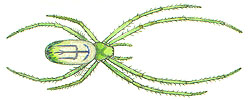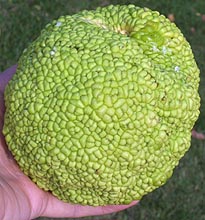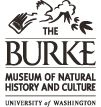 |
|
| You Are Here: Burke Museum : Spider Myths : Weird : Eggs under skin |
Just Plain Weird Stories
Myth: Spiders can lay their eggs under human skin in wounds created by their bites.
Fact: In a surprisingly widespread urban legend,
a nameless woman is bitten by a spider (usually on her cheek) while on vacation.
She later develops a swelling, from which, in due course, baby spiders emerge!
Somehow or other, the venom must have transformed into eggs. Spiders, need I
say, do not find the human body a suitable site for egglaying, and no actual
case anything like this can be found anywhere in scientific or medical literature.
That is, unless you count as scientific literature the book Dancing in the
Mind Field by Nobel Prize chemist Kary Mullis. In one chapter, Mullis claims
to have been bitten by a brown recluse spider
in California (where no such spiders
exist), that other spiders came back to feed on the resulting wound, and that
female brown recluses lay their eggs in such wounds to feed their babies. All
this is sheer fantasy. As the name implies, real recluse spiders avoid humans
like the plague if at all possible.
This legend is still alive and well; in September 2008 a correspondent claimed it happened to the usual un-named "friend," who of course didn't preserve the evidence! In 2006 another person said they'd heard this one combined with the bubble gum legend by a cousin who allegedly "had a swollen jaw, went to the dentist. When the dentist
probed the inflamed area, it burst, and millions of tiny spiders ran out. The cousin had gotten the eggs in her mouth from bubble gum!" Yet another person suggested this legend began in Nicholas Conde's 1982 novel The Religion, but it really dates back much farther.
Myth: "Hedge apples" (Osage orange fruit) or horse chestnuts can be used to repel spiders.

|
|
Large Osage orange fruit Maclura pomifera © 2002 Steve Baskauf |
Fact: The story that the fruit of the Osage orange
tree (also called hedge apple, monkey ball, or spider ball) can repel or ward
off spiders turns out to be extremely widespread in Midwestern states, where
the trees are common. Details vary, but in general it seems that people put
these aromatic fruits around their walls in fall to "keep spiders from
coming in." Since house spiders don't actually come
in from outside, of course this works just fine, but there is no evidence
that spiders are repelled by osage-oranges. They live on the trees and even
make webs on the fallen fruit. What's more, spiders seldom show any sign of
being able to detect airborne odors!
In some versions of the story, the repellent effect has been transferred from
spiders to cockroaches, mosquitoes, chicken mites, or mice. Since squirrels
regularly chew through these fruits to get the tasty seeds inside, a rodent
repellent effect seems pretty unlikely. A recent study did find some cockroach repellency in a purified extract from the fruit – but not in the whole fruit.
In the Pacific Northwest, where Osage oranges are seldom seen, the legend has
been transferred to horse chestnuts. I like horse chestnuts and usually have
some around, but still have plenty of spiders, so I know of my own experience
that this doesn't work.
A correspondent in British Columbia has heard a version of the myth in which
the spiders are repelled by copper pennies!
| Previous Myth | Myths Home | Web Resources | Next Myth |
 |
Text © 2005-2008, Burke Museum of Natural History & Culture, University of Washington, Box 353010, Seattle, WA 98195, USA Phone: 206-543-5590 Photos © as credited |
Queries
to Spider Myths author, Rod Crawford This page last updated 2 September, 2010 This site best viewed at 800 x 600 using IE 5.0 or above. |